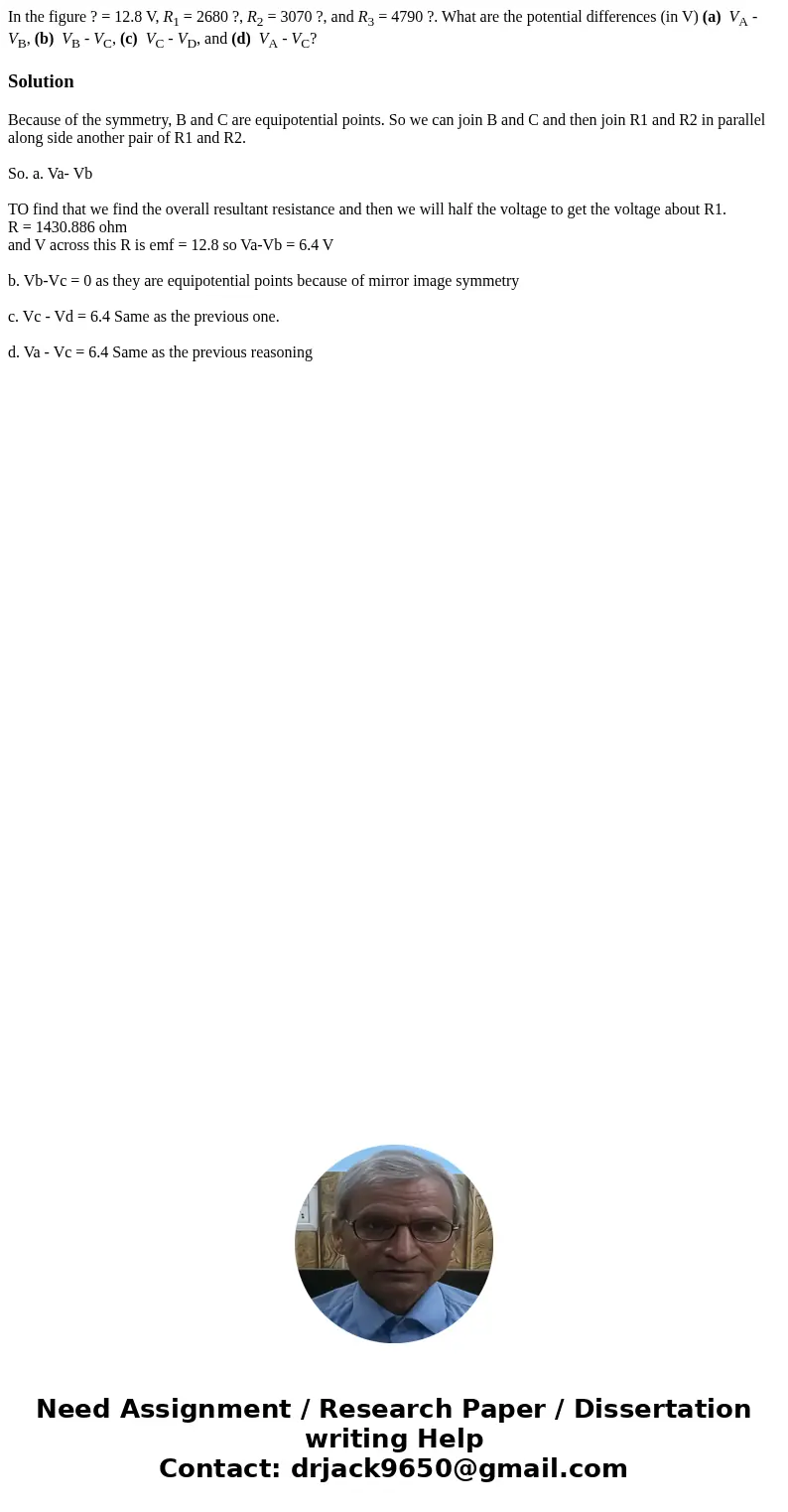In the figure 128 V R1 2680 R2 3070 and R3 4790 What
In the figure ? = 12.8 V, R1 = 2680 ?, R2 = 3070 ?, and R3 = 4790 ?. What are the potential differences (in V) (a) VA - VB, (b) VB - VC, (c) VC - VD, and (d) VA - VC?
Solution
Because of the symmetry, B and C are equipotential points. So we can join B and C and then join R1 and R2 in parallel along side another pair of R1 and R2.
So. a. Va- Vb
TO find that we find the overall resultant resistance and then we will half the voltage to get the voltage about R1.
R = 1430.886 ohm
and V across this R is emf = 12.8 so Va-Vb = 6.4 V
b. Vb-Vc = 0 as they are equipotential points because of mirror image symmetry
c. Vc - Vd = 6.4 Same as the previous one.
d. Va - Vc = 6.4 Same as the previous reasoning

 Homework Sourse
Homework Sourse